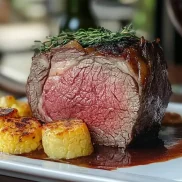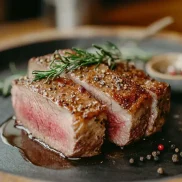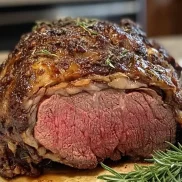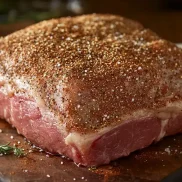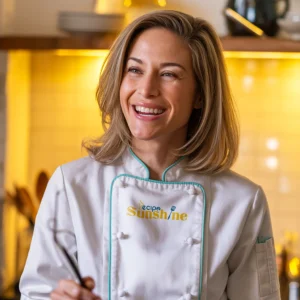Ever wondered how do restaurants get their prime rib so tender? The secret lies in premium meat selection, precise cooking methods, and expert handling techniques. High-end restaurants use slow roasting, proper seasoning, and resting techniques to lock in moisture and enhance tenderness.
From choosing marbled cuts to employing low-temperature cooking, chefs have perfected the science of making prime rib melt-in-your-mouth tender. This guide breaks down the key factors, ensuring you can achieve the same restaurant-quality results at home.
Table of Contents
The Science Behind Prime Rib Tenderness
Achieving perfectly tender prime rib isn’t just about cooking—it’s about understanding the structural composition of the beef and how different techniques impact its texture. The tenderness of prime rib is influenced by three primary factors: muscle fibers and connective tissues, marbling, and enzymatic aging. Each plays a crucial role in ensuring that the meat remains soft and succulent after cooking.
Understanding Muscle Fibers and Connective Tissues
At its core, meat is composed of muscle fibers and connective tissues that determine its texture. Prime rib comes from the rib primal section of the cow, an area known for its rich marbling and tender composition. Unlike tougher cuts that require heavy braising, prime rib naturally contains a balance of muscle and fat that lends itself well to roasting.
Connective tissues, such as collagen, can be a double-edged sword when it comes to tenderness. While excessive connective tissue can make meat tough, slow cooking at low temperatures gradually breaks down the collagen into gelatin, which enhances both tenderness and juiciness. This is why prime rib is often roasted at a low temperature for an extended period—allowing the connective tissues to dissolve without overcooking the muscle fibers.
Additionally, muscle fiber structure plays a role in how tender the meat feels when eaten. Coarser muscle fibers require more careful handling to prevent them from becoming chewy. By slicing against the grain and allowing the meat to rest after cooking, restaurants further ensure that the prime rib remains easy to chew and packed with moisture.
The Role of Marbling in Tenderness
One of the key reasons why restaurant prime rib tastes so much better is marbling—the small flecks of fat interspersed within the muscle tissue. This intramuscular fat melts during cooking, keeping the meat juicy and tender. Higher-quality beef grades, such as USDA Prime, feature superior marbling compared to lower grades like Select or Choice. This is why restaurants often source Prime-grade beef to ensure the most tender results.
Marbling doesn’t just contribute to tenderness; it also enhances flavor. As the fat renders, it bastes the surrounding muscle, infusing it with a rich, buttery taste. This is why many high-end steakhouses prefer dry-aged prime rib, as the aging process further concentrates the flavor while allowing enzymes to break down muscle fibers for an even more tender bite.
How Enzymatic Aging Breaks Down Proteins
Aging is another secret weapon in the restaurant industry’s approach to tender prime rib. There are two main types of aging: dry aging and wet aging.
- Dry aging involves storing the beef in a controlled environment for several weeks, allowing natural enzymes to break down the muscle tissue while intensifying the flavor.
- Wet aging occurs when the beef is vacuum-sealed and aged in its own juices, resulting in a more subtle but still improved tenderness.
These enzymatic processes help break down tough muscle fibers over time, leading to a softer texture. This is why restaurant prime rib often has a more luxurious mouthfeel compared to home-cooked versions that use fresh, non-aged beef.
By understanding these scientific principles, you can begin to appreciate the meticulous process that goes into making restaurant prime rib so tender. Whether it’s selecting the right cut, leveraging marbling, or taking advantage of enzymatic aging, each step plays a vital role in achieving that sought-after tenderness.
In the next section, we’ll explore how restaurants choose and prepare the perfect cut to ensure consistent, high-quality results every time.
Selecting the Right Cut: Why Quality Matters
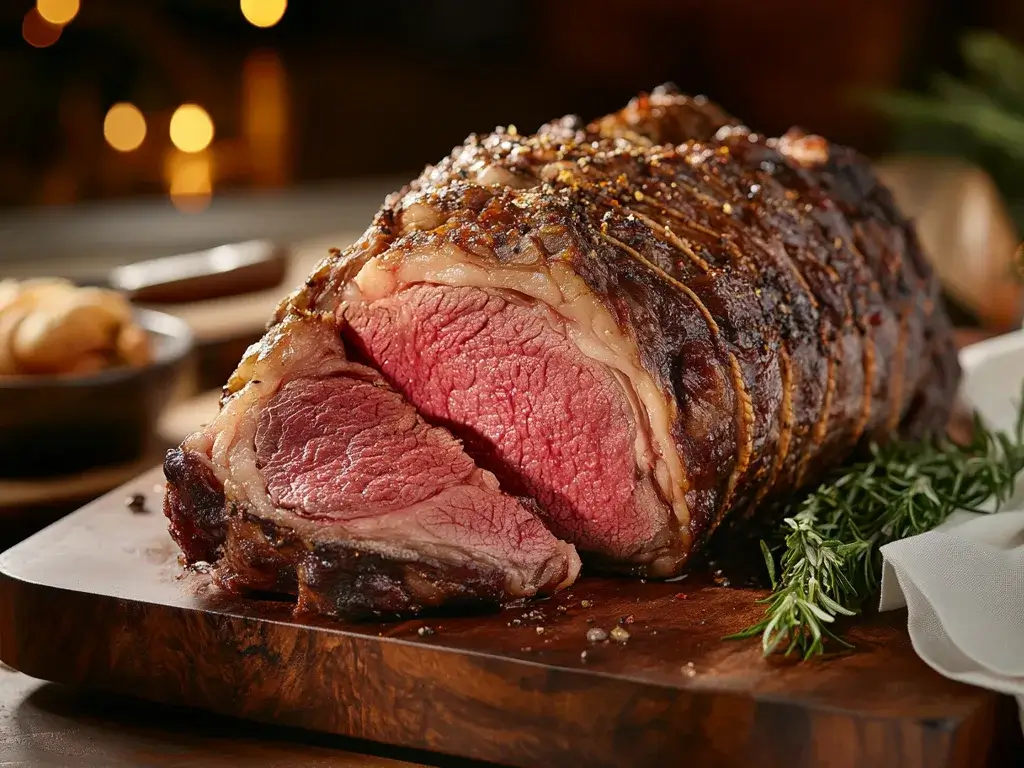
The foundation of a tender prime rib starts with choosing the right cut of beef. Restaurants prioritize quality to ensure a melt-in-your-mouth experience that keeps customers coming back. The grade of beef, bone structure, and aging process all play a significant role in achieving the perfect tenderness. Understanding these factors will help you select the best prime rib for your home-cooked masterpiece.
Prime vs. Choice vs. Select: Grades of Beef
Not all beef is created equal. The USDA beef grading system categorizes beef into different grades based on marbling, tenderness, and overall quality:
- Prime: The highest grade with abundant marbling, ensuring exceptional tenderness and flavor. Restaurants and steakhouses often use Prime-grade beef for the best dining experience.
- Choice: A step below Prime, Choice beef has good marbling but slightly less fat distribution, making it a solid option for home cooking.
- Select: A leaner cut with minimal marbling, Select-grade beef is less tender and requires additional cooking techniques to enhance its texture.
Restaurants almost always opt for Prime-grade beef because of its superior marbling, which melts during cooking and results in a juicy, flavorful cut. If you’re preparing prime rib at home, investing in a Prime or high-quality Choice cut will make a noticeable difference in tenderness.
The Importance of Bone-In vs. Boneless Cuts
Another crucial decision when selecting prime rib is whether to go bone-in or boneless. Each option offers unique benefits:
- Bone-in Prime Rib: The bone acts as an insulator, helping the meat retain moisture and cook more evenly. This results in a richer flavor and more tender texture. Many restaurants prefer bone-in cuts for this reason.
- Boneless Prime Rib: Easier to carve and slightly faster to cook, boneless prime rib can still be incredibly tender when prepared correctly. However, it may require extra attention to seasoning and cooking techniques to match the flavor depth of bone-in cuts.
For the ultimate tenderness and flavor, restaurants typically favor bone-in prime rib, slow-roasting it to perfection before slicing it off the bone for serving.
How Dry and Wet Aging Impact Tenderness
Aging is a key process that enhances the tenderness and flavor of beef. Restaurants often use either dry aging or wet aging to improve the texture of their prime rib.
- Dry Aging: This method involves storing the beef in a temperature- and humidity-controlled environment for several weeks. Natural enzymes break down muscle fibers, resulting in a more tender, deeply flavored cut. The outer layer dries out and is trimmed before cooking, leaving behind incredibly rich and tender meat.
- Wet Aging: In this process, the beef is vacuum-sealed and aged in its own juices for a few weeks. While it doesn’t develop the same deep flavor as dry aging, wet aging still enhances tenderness by allowing enzymes to soften the muscle fibers.
Most high-end restaurants use dry-aged prime rib to achieve superior tenderness and concentrated flavor. However, wet aging remains a practical alternative for home cooks looking to enhance their beef without the need for specialized storage conditions.
By understanding the impact of beef grades, bone structure, and aging methods, you can make more informed choices when selecting prime rib. These factors contribute to the unmatched tenderness and quality that restaurants achieve, setting the stage for a truly exceptional dining experience. In the next section, we’ll explore the cooking techniques that further enhance prime rib’s texture and juiciness.
Restaurant-Grade Cooking Techniques for Ultimate Tenderness
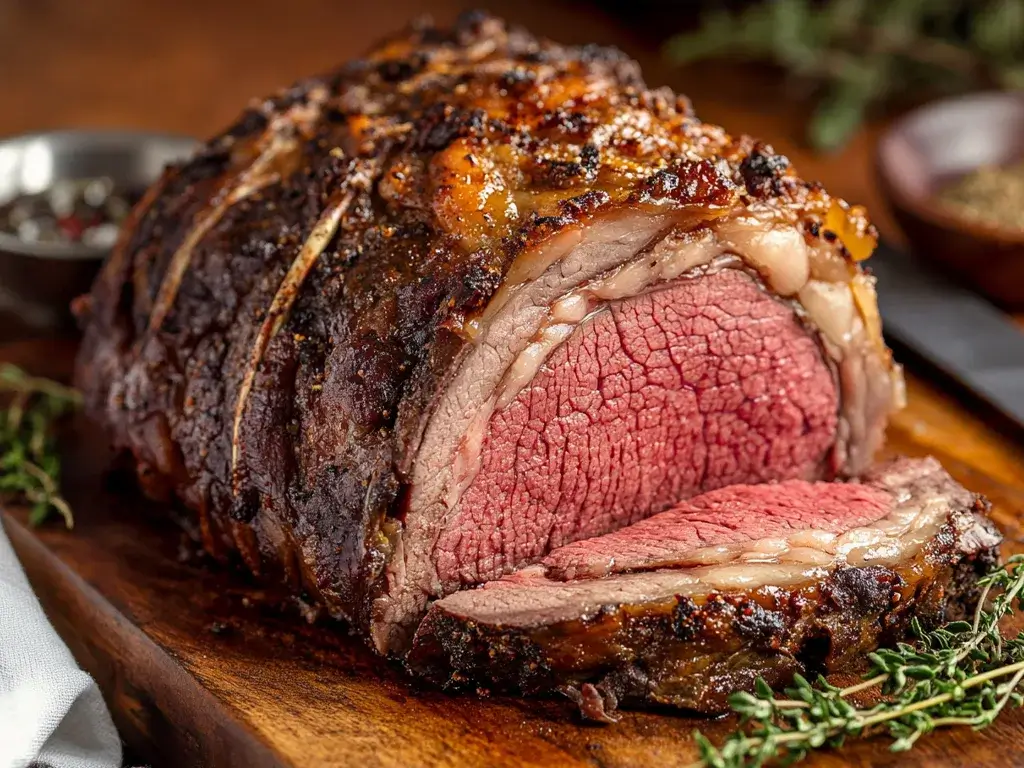
Restaurants achieve perfectly tender prime rib by employing professional cooking methods that maximize flavor and texture. The secret lies in precise temperature control, slow cooking, and searing techniques that enhance juiciness and tenderness. These techniques ensure that the prime rib is cooked evenly while retaining its natural moisture and rich marbling.
The Low and Slow Roasting Method
One of the most widely used restaurant techniques is low and slow roasting. This method involves cooking the prime rib at a low temperature (225–275°F) for an extended period. Here’s why it works:
- Even Cooking: A lower temperature allows the heat to penetrate gradually, preventing overcooked edges while keeping the center at the desired doneness.
- Moisture Retention: Slow roasting minimizes moisture loss, keeping the prime rib juicy and flavorful.
- Collagen Breakdown: The extended cooking time helps break down connective tissues, making the meat tender without drying it out.
Restaurants often use commercial convection ovens to circulate hot air evenly, ensuring a uniform cook throughout the roast. Once the prime rib reaches its target internal temperature (around 130°F for medium-rare), it is rested before being served, allowing juices to redistribute for maximum tenderness.
Sous Vide Cooking: Precision for Perfect Results
Sous vide has become a game-changer in high-end restaurants for its ability to cook prime rib to the exact desired doneness without overcooking. This technique involves vacuum-sealing the beef and immersing it in a precisely controlled water bath at a specific temperature for several hours.
Benefits of Sous Vide Cooking:
- Perfect Temperature Control: The meat never exceeds the set temperature, ensuring consistent doneness from edge to edge.
- Enhanced Tenderness: Cooking at a steady low temperature for 4–10 hours breaks down muscle fibers and collagen, resulting in an incredibly tender texture.
- Juicier Meat: Since the meat is sealed in its own juices, no moisture is lost during the cooking process.
Once removed from the sous vide bath, restaurants finish the prime rib with a high-heat sear to develop a crisp, flavorful crust while keeping the interior perfectly cooked.
Reverse Searing: Locking in Juiciness
The reverse sear method is another restaurant favorite that ensures a perfect crust while keeping the interior juicy. This technique flips traditional searing on its head, starting with a low-temperature roast and finishing with a high-heat sear.
How Reverse Searing Works:
- Slow Roast First: The prime rib is cooked at 225–250°F until it reaches 10–15°F below the target temperature.
- Resting Period: The meat is allowed to rest, ensuring the juices redistribute evenly.
- High-Heat Sear: Just before serving, the prime rib is seared at high heat (500°F or more) using a cast-iron skillet, broiler, or grill to develop a rich, caramelized crust.
Why Reverse Searing Works:
- Prevents Overcooking: The low-temperature start ensures even cooking and a uniform pink interior.
- Maximizes Flavor: The final sear creates a deeply browned crust that enhances taste and texture.
- Retains Moisture: Since the searing happens at the end, the meat stays juicy and tender throughout.
By using these restaurant-grade cooking techniques, chefs ensure that every bite of prime rib is succulent, flavorful, and melt-in-your-mouth tender. In the next section, we’ll explore the secret ingredients that enhance tenderness and elevate prime rib to the next level.
The Secret Ingredients That Enhance Tenderness

Perfectly tender prime rib isn’t just about the cooking technique—it’s also about the ingredients used to enhance its texture and flavor. Restaurants rely on a few key components that work behind the scenes to break down muscle fibers, retain moisture, and elevate the overall eating experience. These secret ingredients include salt, fat, and aromatics, each playing a critical role in making prime rib exceptionally tender.
The Magic of Salt and Dry Brining
One of the simplest yet most effective ways to enhance tenderness is through dry brining—the process of coating the meat with salt and allowing it to rest before cooking. This technique does more than season the exterior; it actually improves the meat’s texture from within.
How Salt Works to Tenderize Prime Rib:
- Breaks Down Proteins: Salt draws out moisture, dissolving muscle fibers and restructuring them into a softer, more tender consistency.
- Enhances Juiciness: Over time, the drawn-out liquid is reabsorbed, helping the beef retain more moisture during cooking.
- Deepens Flavor: Unlike surface seasoning, dry brining allows salt to penetrate deep into the meat, ensuring a well-seasoned bite throughout.
Restaurants typically season prime rib at least 24 to 48 hours in advance, using kosher salt or sea salt to achieve the best results. Some even add a touch of sugar to balance the salt and enhance caramelization during roasting.
The Use of Fat Basting and Butter Baths
Fat plays a crucial role in tenderness, helping to coat the meat’s surface, protect it from drying out, and add a luxurious mouthfeel. High-end restaurants use fat basting or butter baths to ensure prime rib stays succulent from start to finish.
Methods for Using Fat to Enhance Tenderness:
- Butter Basting: During roasting, chefs spoon melted butter over the meat to continuously coat and baste it, reinforcing its natural juiciness.
- Beef Tallow Coating: Some steakhouses rub prime rib with rendered beef fat before cooking, forming a rich crust that locks in moisture.
- Infused Butter Baths: Some restaurants submerge the prime rib in a warm butter bath after roasting, letting it absorb extra richness and tenderness.
Butter basting also allows for added flavor infusion. Many chefs include garlic, shallots, and fresh herbs in the butter mixture to complement the meat’s natural umami.
How Aromatics and Herbs Improve Texture
While salt and fat ensure tenderness, aromatics and herbs contribute to both flavor and texture enhancement. Certain ingredients help tenderize meat by gently breaking down muscle fibers and infusing deep, savory notes into the roast.
Key Aromatics Used in Prime Rib Preparation:
- Garlic & Onions: These ingredients contain natural enzymes that slightly soften the meat while enhancing flavor.
- Rosemary & Thyme: Woody herbs add depth and aroma while subtly working to tenderize meat as they infuse their essential oils.
- Black Pepper & Mustard Seeds: These spices create a flavorful crust that enhances texture while adding mild enzymatic action.
Restaurants often apply herb rubs and aromatic crusts to prime rib before roasting, allowing the flavors to permeate the outer layer and enhance tenderness through slow cooking.
By combining salt for structure, fat for moisture, and aromatics for depth, chefs create a prime rib that is not only tender but also intensely flavorful. In the next section, we’ll explore the temperature control techniques that guarantee consistent, restaurant-quality results every time.
Frequently Asked Questions
To help you fully understand how do restaurants get their prime rib so tender, we’ve compiled answers to some of the most commonly asked questions about achieving that perfect texture and flavor.
How do restaurants make prime rib so tender?
Restaurants use a combination of high-quality beef selection, dry aging, slow roasting, and proper resting to ensure their prime rib remains tender. They often opt for Prime-grade beef, rich in marbling, which naturally enhances tenderness. Additionally, low and slow cooking methods, such as roasting at 225°F–275°F, allow the meat’s collagen to break down into gelatin, resulting in a juicy and tender texture. Learn more
What is the secret to tender prime rib?
The secret lies in choosing the right cut, dry or wet aging, proper seasoning, and precise temperature control. Dry brining with kosher salt for at least 24 hours enhances flavor and texture. Slow roasting at a low temperature, followed by a final high-heat sear, ensures even cooking while keeping the meat moist. Additionally, allowing the prime rib to rest for at least 20–30 minutes before slicing helps redistribute juices and maintain tenderness. Learn more
What is the best way to season a prime rib?
The best way to season prime rib is with a simple yet effective dry rub consisting of kosher salt, freshly ground black pepper, garlic powder, and fresh herbs like rosemary and thyme. Some chefs prefer adding a thin layer of Dijon mustard to help the seasoning adhere better and develop a deeper crust. For maximum flavor penetration, season the roast 24–48 hours in advance and allow it to dry brine in the refrigerator before cooking. Learn more
Should I sear prime rib before or after roasting?
The reverse sear method is the preferred technique for achieving both tenderness and a flavorful crust. This means roasting the prime rib at a low temperature first until it reaches about 10–15°F below the target doneness, then finishing it with a high-heat sear (500°F or more) just before serving. This method locks in moisture while creating a beautifully caramelized crust.
Why does resting prime rib make it more tender?
Resting is crucial because it allows the meat’s juices to redistribute. Cutting into a prime rib too soon causes the juices to spill out, making the meat dry. A good rule of thumb is to let the roast rest for at least 20–30 minutes under a loose tent of foil to ensure maximum juiciness and tenderness.
Can I achieve restaurant-quality prime rib at home?
Yes! By selecting a high-quality cut, seasoning in advance, using low and slow cooking, and following proper resting and slicing techniques, you can replicate restaurant-quality results in your own kitchen. Investing in a meat thermometer to monitor internal temperature accurately will help you achieve perfect doneness every time.
Conclusion
Achieving restaurant-quality prime rib at home is absolutely possible with the right approach. By understanding how do restaurants get their prime rib so tender, you can replicate their expert techniques, from selecting high-quality beef to mastering slow roasting and precise seasoning.
The key elements to remember are:
- Choose Prime-grade or well-marbled beef for superior tenderness.
- Use dry brining with kosher salt to enhance flavor and juiciness.
- Employ slow cooking at low temperatures, followed by a high-heat sear for the perfect crust.
- Allow proper resting time to let juices redistribute for optimal tenderness.
By incorporating these techniques into your cooking routine, you can enjoy tender, flavorful, and juicy prime rib that rivals even the best steakhouses. Now that you know the secrets behind restaurant-quality prime rib, it’s time to put your knowledge into practice and impress your guests with an unforgettable dining experience!


